
Palm trees are underrated. They’re readily available at stores like IKEA and Lowes, safe and non toxic to cats, dogs, and birds, grow quickly, and are easy to take care of. While Instagram is flooded with Monsteras and Fiddle Leaf Figs, I, for one, would love to see some #palmlove.
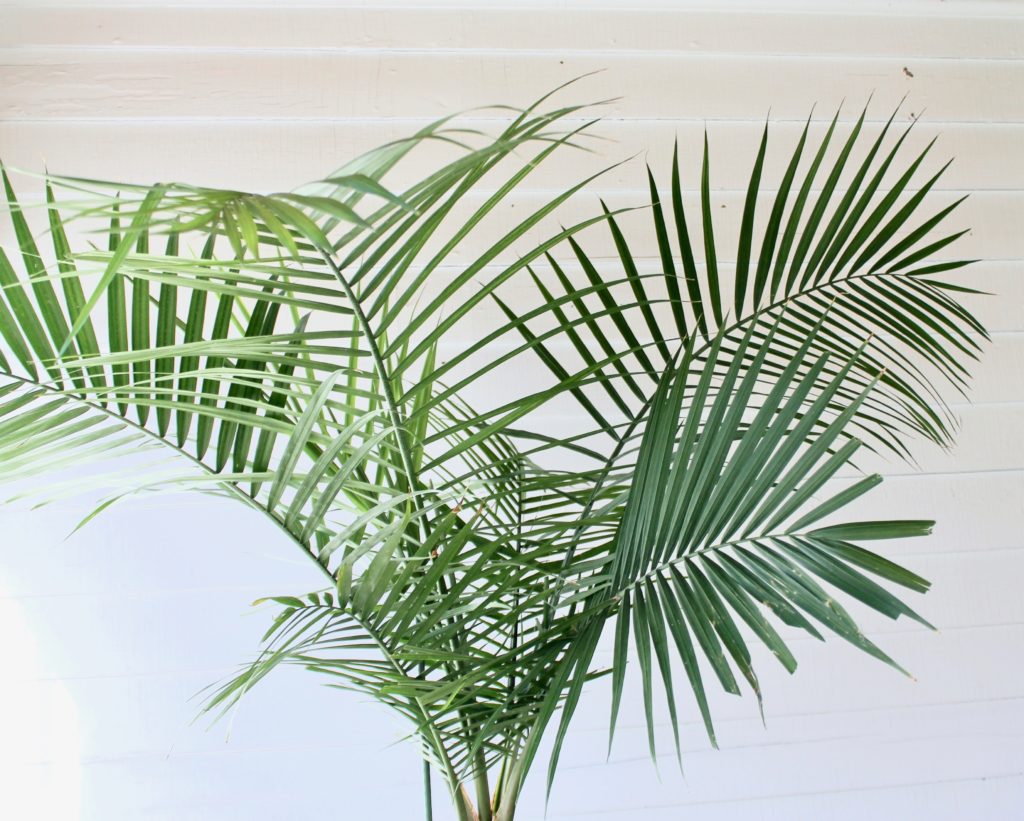
Harold (above) is my first Majesty palm, and one of my first indoor plants. He’s been through a mealybug infestation, scorching summer heat and a careless mom moment when I left him outside in freezing temperatures. Somehow he bounced back. Palms are pretty hardy and as long as you listen and love them, they’ll be your favorite pet-safe large plant. Plus, they are one of the top air purifying plants for your home.
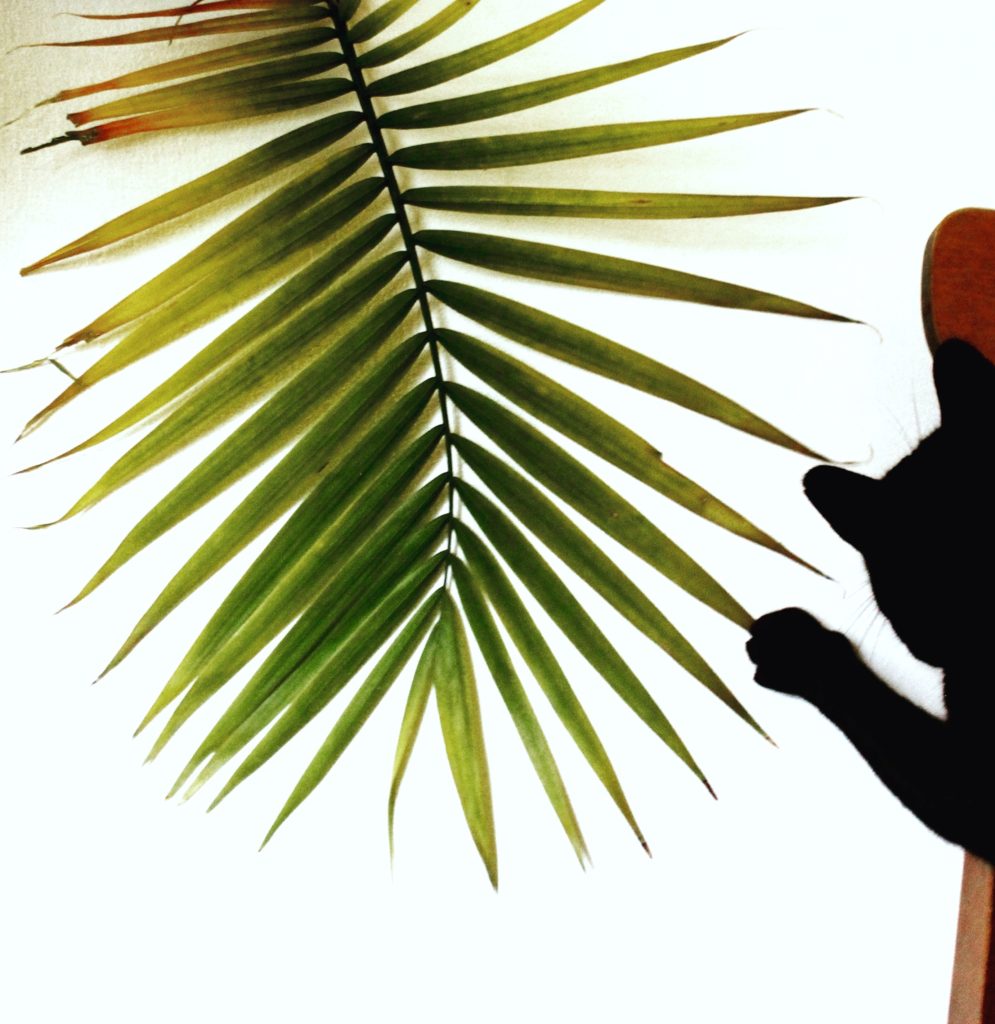
Which Palm to Pick?
There are many types of palms and to be honest they all look pretty similar. Typically big stores like Amazon and IKEA sell the Majesty Palm, which is the most common and completely non toxic to cats and dogs. The latin name on the tag should read “ravenea rivilaris.” The Majesty Palm acclimates to both hot and lower temperatures, and is happy in medium to high light. Harold’s a Majesty Palm and has been trucking along for 4+ years, despite poor parenting.
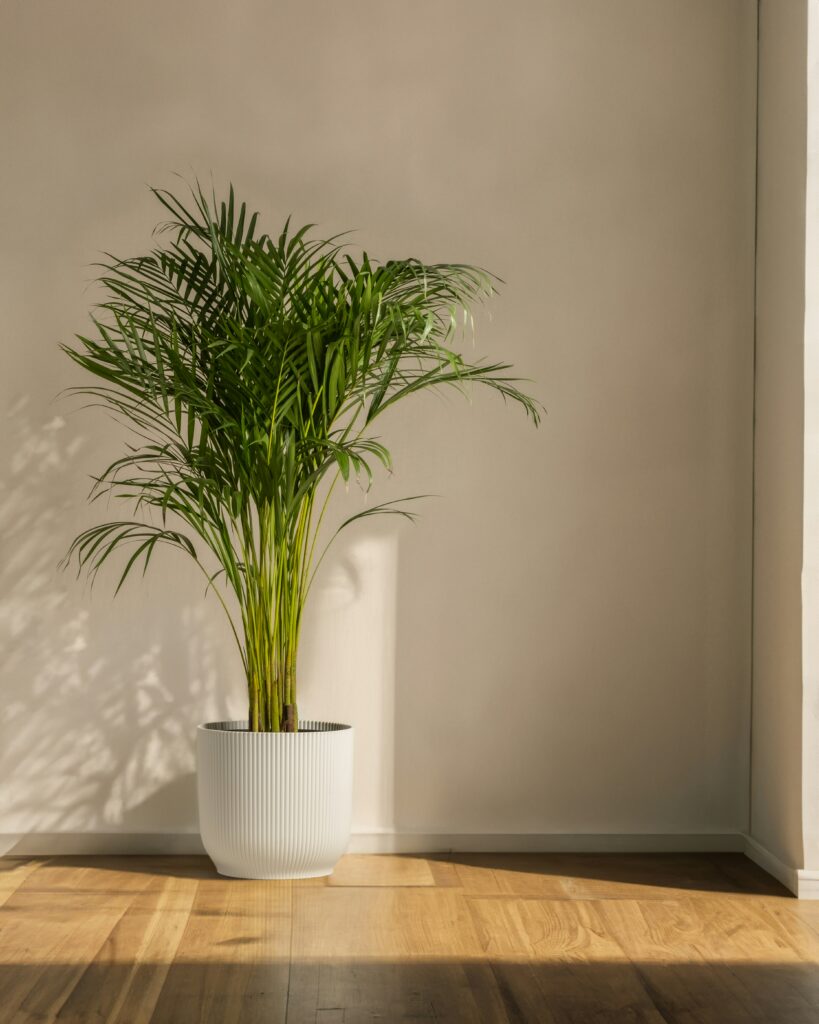
Areca Palms and Parlor Palms look similar to Majestys but are a bit more elegant. Their fronds are thinner and lighter, but they still grow tall and are non toxic to cats and dogs.
Ponytail Palms (below) are more petite varieties, although they can grow to be huge, and are also pretty common in stores. Unlike the three listed above, Ponytail palms aren’t in the palm family, but they do look like one, and are safe for pets.
Fishtail palms, Fan palms (below) and Sentry Palms are gorgeous. I always see them in fancy greenhouses in mansions and botanical gardens, but never find them available. Like other palms, their non toxic, air purifying, and humidity lovers. Side note: If you ever do find these available to purchase, please buy one and send me a clipping. Please.
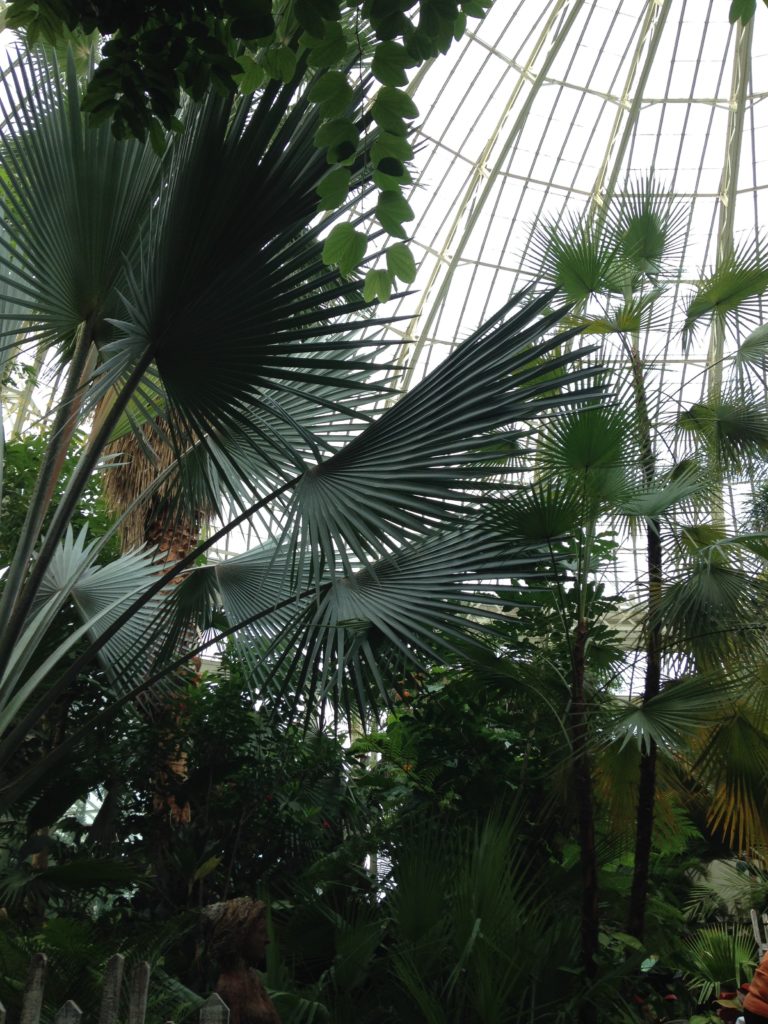
Palms and Cats
I need to stop right here. Sure, you can fill your home with gorgeous palms that are completely non toxic to your cat, but I have some news, they will obliterate them. Your innocent cat may will eat you palm to shreds, until you find regurgitated sticky leaves all over your house and in the litter box. Palms are cat magnets. Why? Well, look at them. They’re stringy, taste like grass, and something you love. Unless you have angel cat sent from the heavens, you need to take proper caution bringing a palm into your home. Yes it’s fine if your cat munches, but they won’t stop munching it until it’s gone (see leaves below). I recommend putting palms on plant stands, small tables and pedestals, just high enough out of reach. Yes, I treat my cats like a grabby toddler.
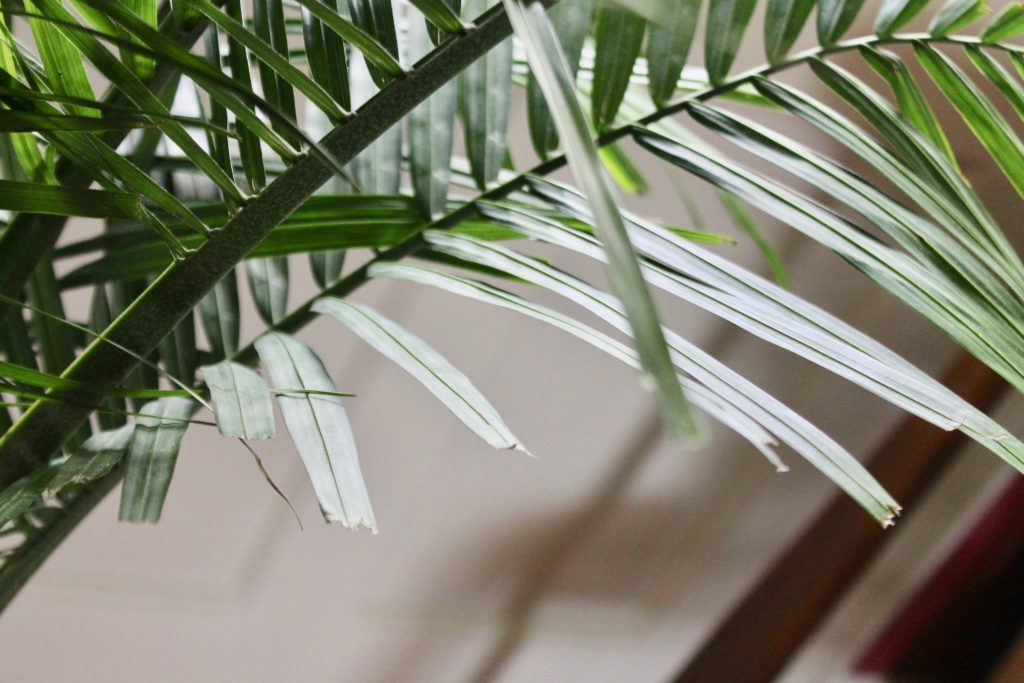
Toxic Palms
This is an important little blurb because many tall stringy plants look like palms but aren’t. This is actually why I included the latin names above, as that will be your only identification. Many Dracaenas can be labeled a palm but aren’t, and these are toxic to pets. Take the extra second and read the label and if that’s not clear, ask an expert. Never buy a plant you can’t identify. The Sago Palm is an actual palm; it’s considered one of the most toxic plants to cats and dogs, resulting in death if ingested, and must be avoided at all costs.
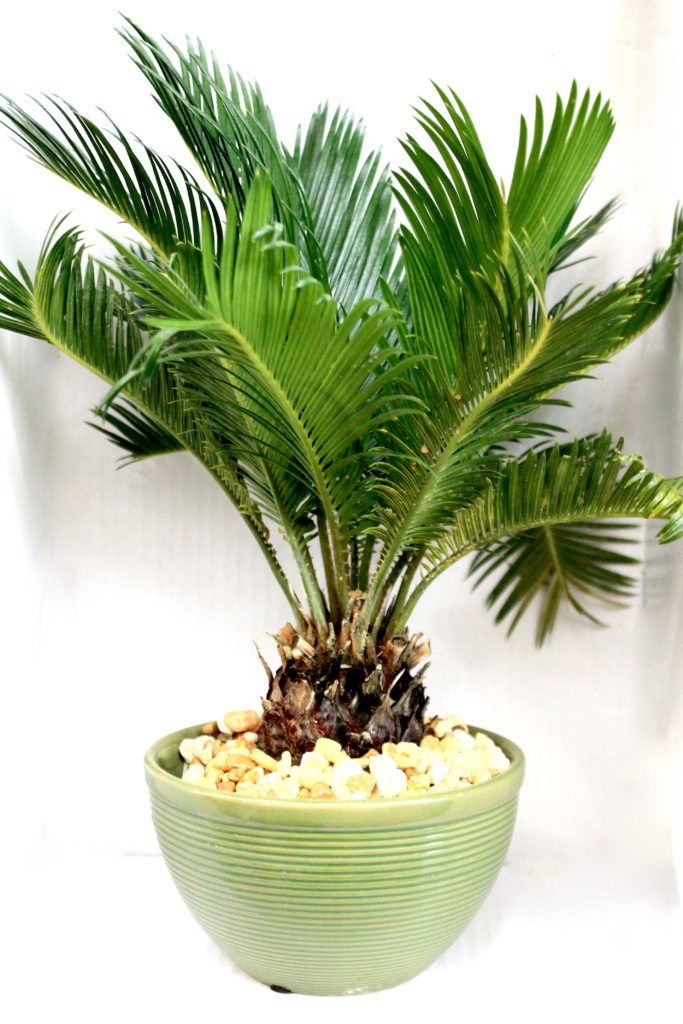
Read your Palm
Sure, you can grab your tarot cards, why not. But that (probably) won’t help you become BFFs with your palm. They can be tricky to care for, but so is any new plant that needs to adapt to your home conditions, which are usually inferior to the greenhouse they grew up in. All palms seem to like medium to bright light – mine are in an east window behind a sheer curtain. They do tolerate indirect light, but you need to be extra careful with watering.
This brings me to my next point: watering. Overwatering is the number one killer of palms. I have seen them fall victim to soggy and moldy soil over and over again.
Palms prefer to be underwatered if anything, but obviously grow best when watered consistently. Keep their soil moist throughout; the top layer should be slightly dry to the touch. During the summer, they grow rapidly, so attention to watering is imperative.
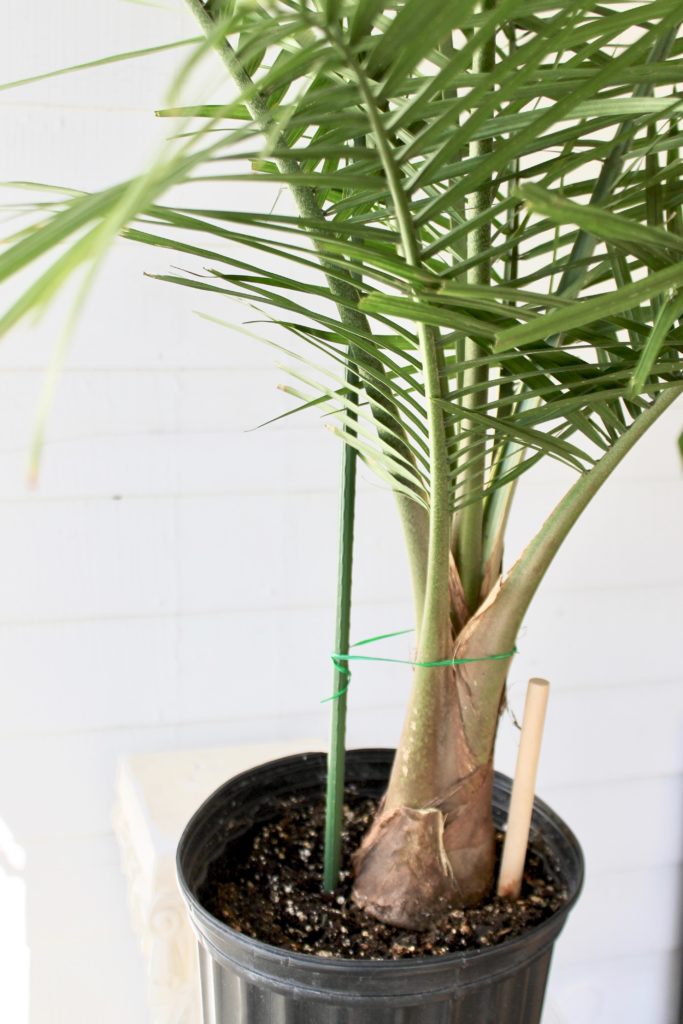
If watering is your number one challenge (don’t worry, it’s mine too), invest in a Moisture Meter. They’re inexpensive plus it’s nice to have something just tell you “it’s time to water this plant or it will die.”
Palms have a hard time staying upright, so you may need to stake it, as seen above. As far as planters go, Palms like drainage. Either a Terra Cotta or plastic planter will work, just be sure it’s sturdy with drainage holes. The goal is to have any excess water run off then be discarded. Palms hate soggy soil diapers.
There are more palms that are rare and hard to find that I haven’t talked about here, but I live in the US and our exotic plants only get so exotic. Share your palms on Instagram and tag @leaf.and.paw with #palmlove. I’m really trying to make it a thing.
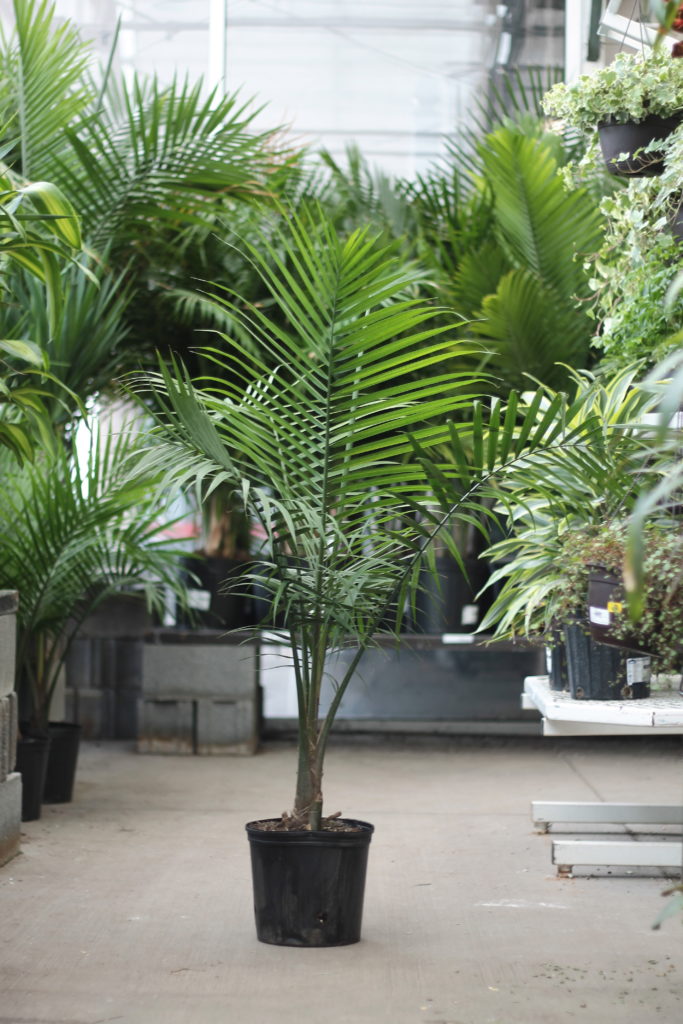


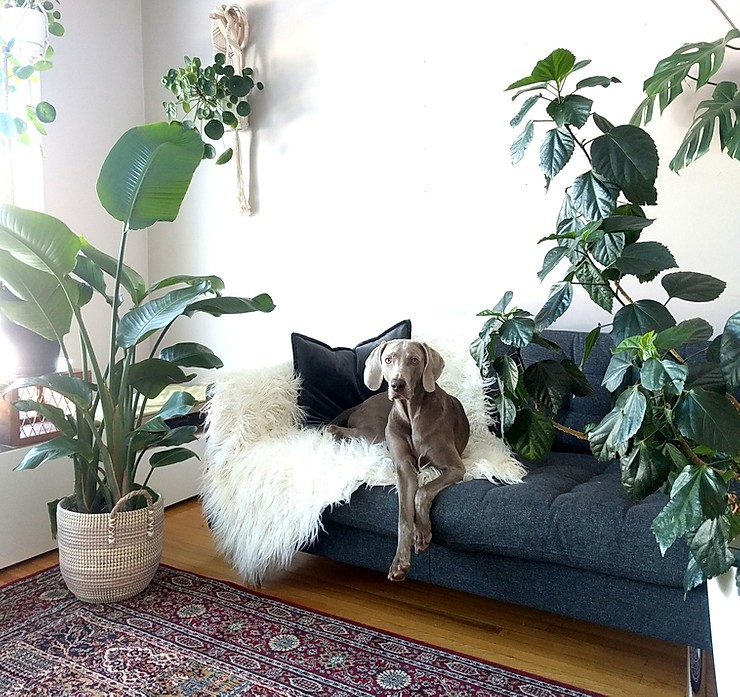
Thank you for mentioning about the Sago Palm. Too many articles I’ve read make the sweeping statement that “palms are nontoxic to cats”
My neighbor wants to throw her majestic palms(2) away when winter comes. I have 2 cats. Would it be ok for me to bring them in.
Hi Paula! You most certainly can, just be aware that cats LOVE palms and will eat them. While they are nontoxic, I encourage you to keep them on a pedestal or table out of reach as cats will eat them down to a nub.
As I watched my cat munching at the lower part of my palm tree I quickly googled,… and came across this very helpful information from you!
Right down to the common fans purchased at Lowes and such and knew mine was the same!
Regards
Laurie
Glad I can help Laurie!
I bought a kentia Palm a year ago and have managed to keep it alive and it’s growing wonderfully. Unfortunately, I do have a fabulous feline named Jett who absolutely is obsessed with it. I have it on a pedestal and he still will manage to get a bite or two. I wanted to know (it’s non-toxic, I checked before purchasing) however, I want to know if it’s bad for the plant to be constantly chewed and also if there is a spray or something you’ve tried to keep your kitties away! I’m desperate as I love my palm and my kitty. Thank you!
Hi Elizabeth! Cats will do that. It won’t damage the plant, but the leaves will look terrible and get gross and dry the more they get nibbled. I don’t like to use sprays or anything because cats constantly rub against things and clean themselves and the chance of irritation to their eyes and nose is too high. I wold get a tall and narrow pedestal or plant stand, something where there is NO room to jump onto. That is honestly the only thing that worked for me – I hope that helps!.
Hi! do you know if Licuala cordata palm is safe for cats? I cannot for the life of me find any information on this online 🙁
Hi Steph, I believe this is a fan palm and part of the Arecaceae family, which is safe. Still I wouldn’t let you cats eat too much of any palm, it usually leads to throw up puddles (albeit safe ones) later.
My 13 yr old healthy 21 pound tabby died 2 months after he chewed a palm plant.
Hi Karin, Some palms are toxic (as I mention in this post) and I also suggest never allowing your pet to consume any plant in excess.
Hello! I just bought a palm from walmart (canada) and the price tag called it a summer palm, its tall and looks like it could either be a majesty palm or a kentia palm, not sure. But ny cat has already started eating the leaves and I wanted to make sure it wasnt poisonous for her
Hi Leanne! Even though many palms are safe I would not willingly let your cat consume the leaves. Since there’s no way to know which palm you have, I would keep it on a plant stand or pedestal out of reach.
As soon as I saw the photo, I immediately recognized what my kitty (Lola) has been doing to my Areca palm!
I found your article as I’ve specifically been looking for info on what to do about the tips that are chewed off (and are now browning). I’ve read some conflicting info on whether or not to prune those areas back. Some articles suggest that pruning may damage the plant and reduce its ability to grow.
So my decision is—either leave them as-is (the cat has done enough damage) or prune the worst parts back.
Do you have any advice on this? How do you deal with the spots on your palm where your kitties have gone to mow-town?
Thank you—I appreciate your time and insight!
Hi Laura! So, yes, there isn’t a general answer. Pruning too much (like almost to the truck) can prevents growth on a plant that’s younger. My rule of thumb is (and this is what I do at home) is if the ends are chewed, I snip them off at an angle to mimic the plant’s leaf. If it’s really bad but the plant has tons of leaves, I cut the whole damaged leaf off. If it’s a young plant, I snip the ends or just leave the leaves alone. I hope that helps!
Hi,
I’ve been reading several articles where fishtail palms are considered toxic to cats…there’s one I’m considering buying but the supposed toxicity is giving me pause (paws?). Are they really toxic to cats?
Thank you!
Hi Sarah, Many palms for sale in the United States are safe for cats, however, depending on where you live, there may be some that are for sale that are not. Feel free to let me know which one you are considering buying and I’d be happy to check the toxicity level.
I’ve got the same conundrum as Sarah and my fishtail palm! There seems to be plenty of conflicting information regarding toxicity but no consensus. Hard to figure this one out!
It is hard! Fishtail palms are not super popular here (in the USA anyway) so I would err on the side of caution and not keep it near pets.
I think I’ve figured it out – the fruit is definitely poisonous and the stalk can cause some irritation (see: http://www.stuartxchange.org/Pugahan). I am getting rid of mine just to be safe!
Hi – Ive got a dwarf fan palm – do you know if its poisonous to dogs? I think its part of the Arecaceae family
Hi Kathy, something things are labeled as a “palm” but are not. I would try to find out the exact latin name of the plant you have just by searching the look of your plant. The lady palm is called a fan palm and that is part of the Araceae family and is not toxic, but they look different.
Great article! It made me laugh out loud. I just got a ‘cat palm’ and my little fluff nugget is already obsessed with it.
Hi there, do you know if Alexandra palms (archontophoenix alexandrae) are toxic to dogs? I can’t seem to find this info anywhere.
Hi Kirsty – the archontophoenix alexandrae is not the same as an areca palm or the typical palms you see as houseplants. They appear to be a separate family so I would err on the side of caution and consider these not safe for pets.
Sago palms are NOT palms at all. They belong to a very ancient family of cone-bearing plants. They are only called palms because they resemble them. They are toxic to both cats and dogs.